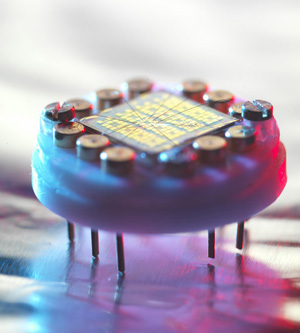New research reveals how light can be used to control the electronic properties of graphene - research that paves the way for the development of graphene-based optoelectronic devices and highly sensitive sensors.

This year's Nobel Prize in Physics was awarded to research on the material graphene, recognizing its potential to be used in a variety of applications in everyday life, from extremely fast electronic components to touch screen technologies. Researchers from the UK's National Physics Laboratory, together with an international team of scientists, have further expanded our understanding of graphene as they show that when this extraordinary material is combined with special polymers, its electronic properties can be precisely controlled by light, and this can be exploited to develop A new generation of photoelectronic devices. The polymers manage to preserve the light and thanks to this the graphene device preserves its adapted properties until the polymer "memory" is erased by heating.
Light-emitting graphene chips are already used today in highly accurate experiments to measure electronic resistivity.
In the future, similar polymers could be used to effectively absorb and "translate" information from their environment and influence the behavior of the graphene itself. It will be possible to take advantage of this ability to develop reliable and stable sensors for detecting smoke, toxic gases, and molecules of any other desired substance.
Graphene is an unusual two-dimensional material consisting of a single atomic layer of carbon atoms. This is the thinnest material known in the world, and at the same time - the strongest found so far.
Graphene has no volume - it is a two-dimensional surface - and therefore its entire structure is exposed to the environment, a feature that allows it to react to any molecule that hits it. Graphene is a very fascinating material in the field of efficient sensors capable of detecting individual molecules of toxic gases. Polymers allow graphene to react to specific molecules and ignore the other types at the same time, which also prevents contamination of the material.
